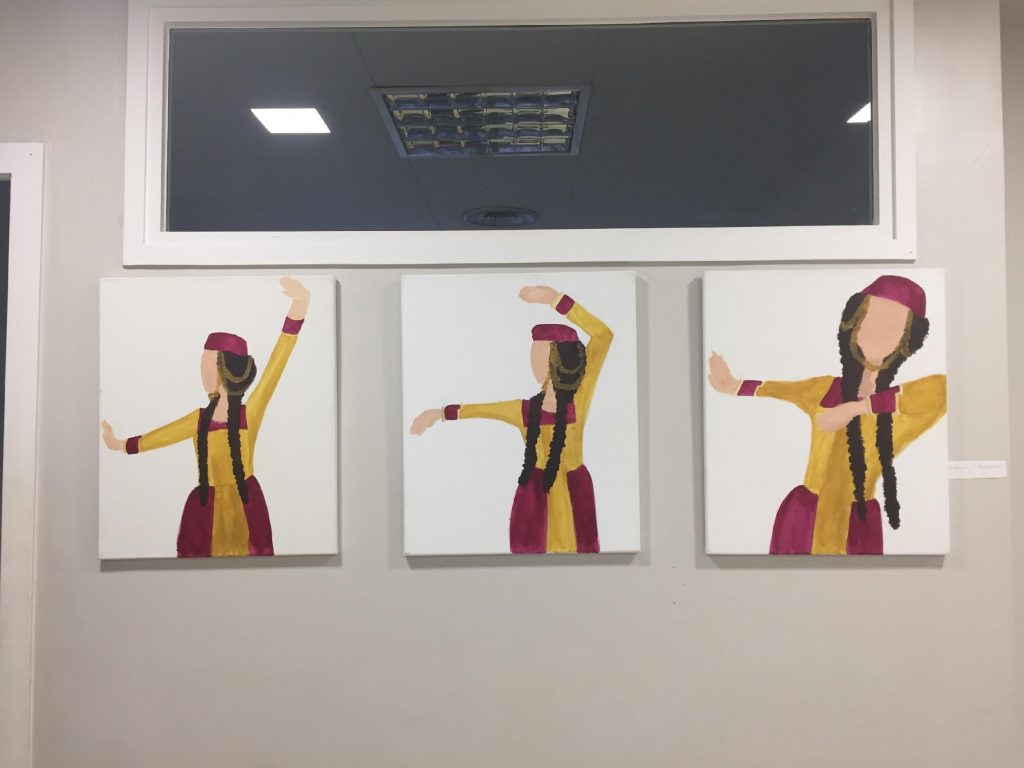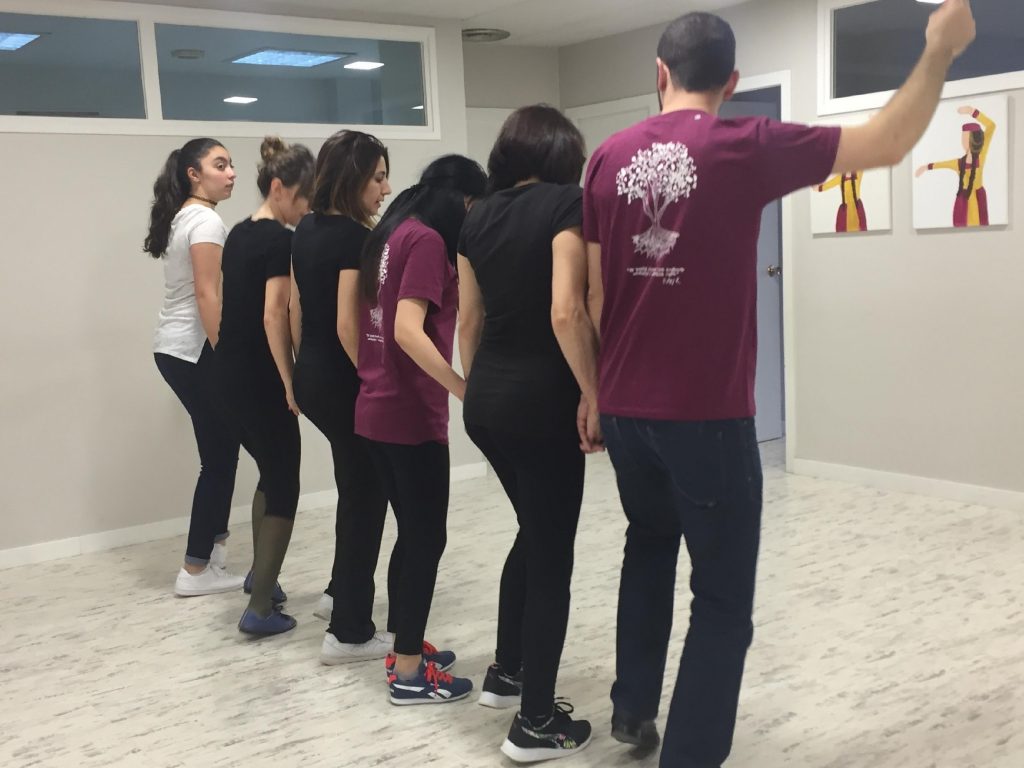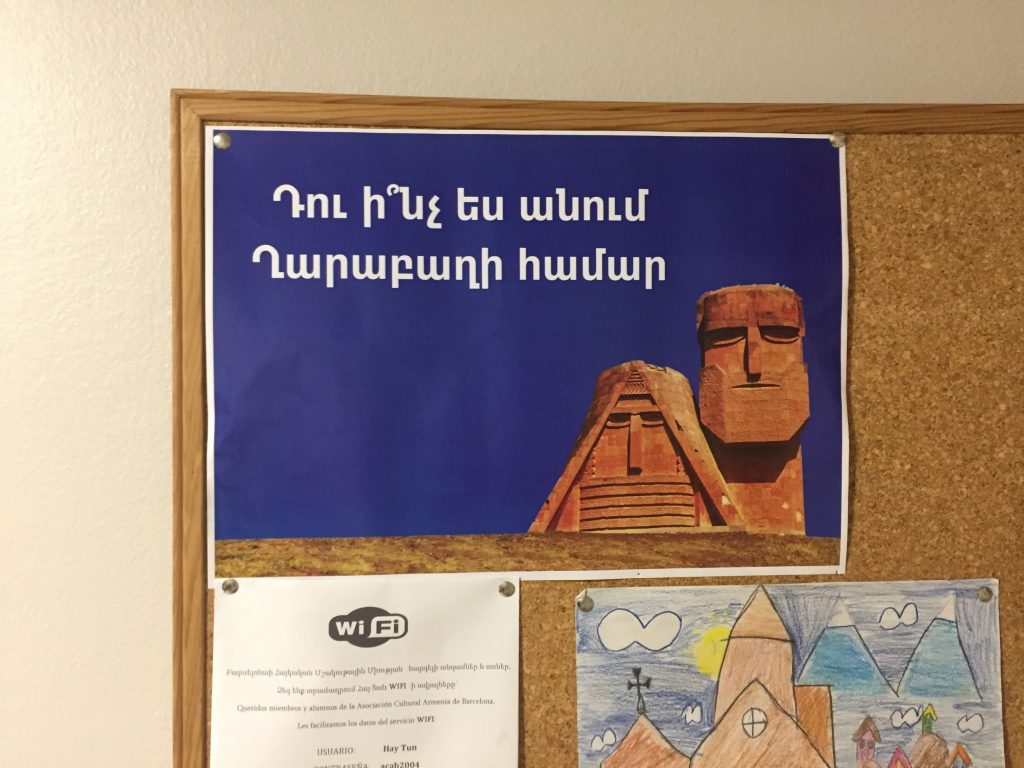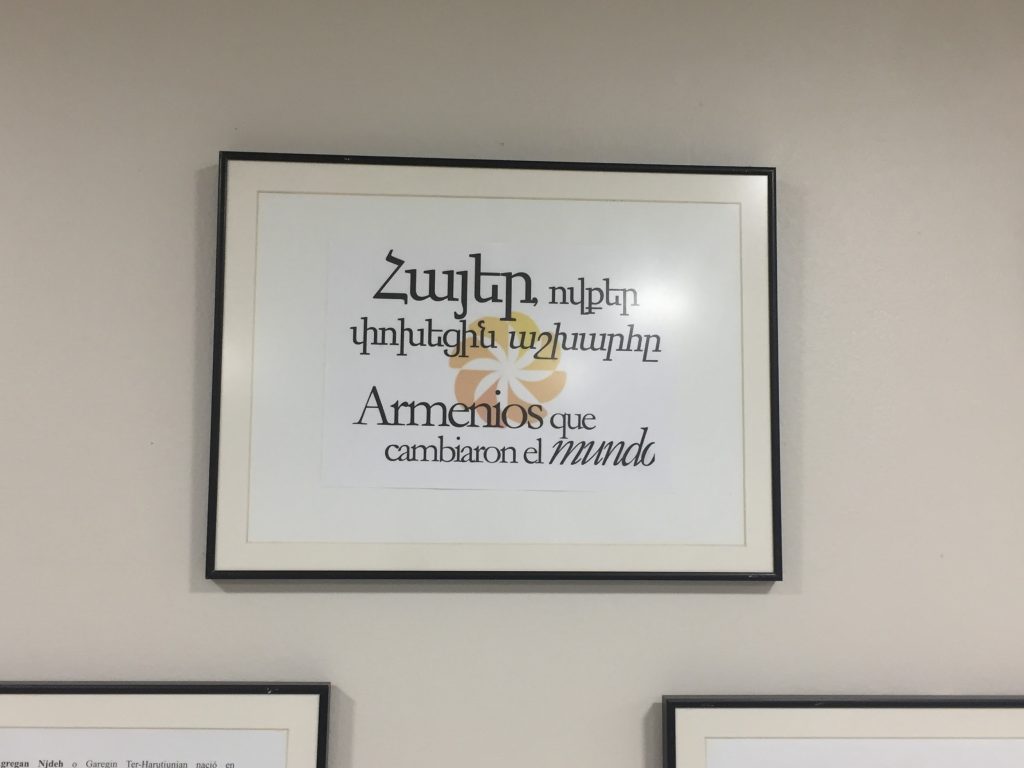By Ani Khachatourian
In early January, I landed in Barcelona not knowing a single soul in the city. I would be living in a foreign country for the upcoming four months—in an area with no Armenian community (to my knowledge)—for the first time in my life.

‘I feel just a little more at home knowing there is something Armenian in Barcelona.’ (Photo: Ani Khachatourian)
I soon found out that an Armenian community does, in fact, exist. And although they are not great in numbers, they are surely great in spirit.
After some research, I was able to contact the Armenian Cultural Association of Barcelona (ACAB – Associacio Cultural Armenia de Barcelona). I received a quick reply inviting me to Casa Armenia or Հայ Տուն (Hay Tun-Armenian House) on March 4, a day that the local Armenian dance ensemble was holding a practice like they do every week.
I walked in and followed the excited sounds of conversation and laughter that sounded so comforting and familiar.

‘I received a quick reply inviting me to Casa Armenia on March 4, a day that the local Armenian dance ensemble was holding a practice like they do every week.’ (Photo: Ani Khachatourian)
After meeting chairman Datev Soulian, we took a quick tour and learned more about what they do at Casa Armenia. He explained that since the arrival of the first known Armenian in 1992, following the collapse of the Soviet Union, creating an Armenian Community has been a struggle, to say the least. The numbers are low, which creates an immediate obstacle. As of today, there are about 4,000 Armenians living in Barcelona.
The ACAB was founded in 2004. In 2006, it was officially registered in the Ministry of Justice in Catalonia. The ACAB, in partnership with the Armenian General Benevolent Union (AGBU), inaugurated the Casa Armenia center in 2010. Casa Armenia’s mission, as with other Armenian centers in the diaspora, is devoted to teach and preserve the Armenian culture and heritage. Here, they also organize various events, such as conferences, chess competitions, meetings, and social events.
Throughout its existence, the ACAB has been actively involved in education and cultural development of children, adolescents, and young adults of Armenian descent living in Barcelona.

‘it was refreshing to see our Ա, Բ, Գ (alphabet) on the walls of the classrooms…’ (Photo: Ani Khachatourian)
In 2006, the ACAB started a weekly school for students to learn Armenian language and history. Not only does this give the Armenians of Barcelona the opportunity to learn our language and history, it also allows them to study and embrace the culture and traditions of our people.
The center holds traditional Armenian instrument classes and dances, as music is an integral part of our culture. Members of the ACAB actively participate in events such as the Euro Armenian games, which were held in Barcelona in 2014. In 2010, the ACAB began offering Spanish and Catalan language courses for Armenians who recently moved to Spain and for those who need help in adapting to completely new conditions. In 2014, the ACAB also founded a chess academy.

A sign on one of the walls on Casa Armenia asks ‘What are you doing for Karabagh (Artsakh)?’ (Photo: Ani Khachatourian)
Soulian explained that one of their current projects is to put together a Hai Tad (Armenian National Committee) committee, as one of their biggest concerns is “hayapahpanum” (preservation of the Armenian identity). To commemorate the Armenian Genocide this year, they plan to hold a protest and conference on the week of April 24.
Barcelona’s Armenian community is not sizeable, but it isclear that the Armenians in here have every motivation to maintain the community they have built. After all, every community in the diaspora started with little and became something bigger with time and effort. Here, they work hard to preserve our culture and to make sure that the youth know exactly where they came from.

‘It was refreshing to see quotes from Karekin Nejdeh and Zabel Yessayan under a sign that reads ‘Armenians Who Changed the World.”(Photo: Ani Khachatourian)
It was comforting to walk into classrooms and see kids playing BINGO in Armenian, while their mothers and siblings danced our traditional dances in the room next door. It was refreshing to see our “Ա, Բ, Գ” (alphabet) on the walls of the classrooms, and quotes from Garegin Nejdeh and Zabel Yessayan under a sign that reads “Armenians Who Changed the World”.
Most of all, though, I feel just a little more at home knowing there is something Armenian in Barcelona.
Ani Khachatourian is a member of the Armenian Youth Federation – Youth Organization of the Armenian Revolutionary Federation (AYF-YOARF) Greater Boston “Nejdeh” chapter.
Source: Armenian Weekly
Link: Something Armenian in Barcelona
